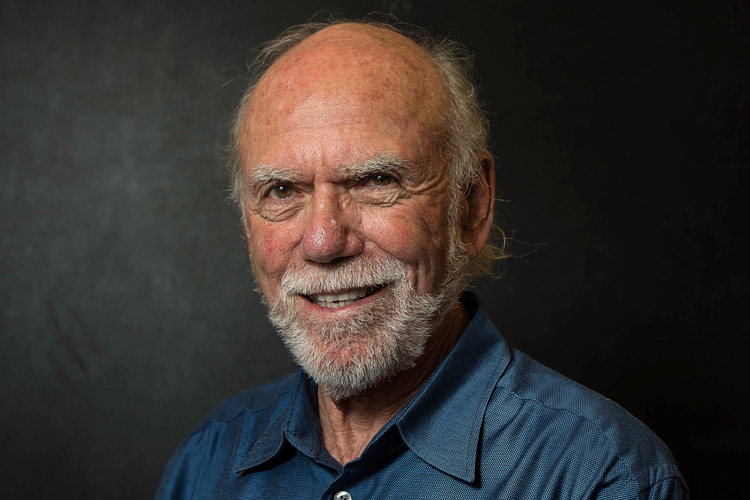
Gravitational-wave astronomy is a new physical science that is attracting researchers in several universities and institutions across the world, and with good reason.
Thanks to this new branch, we are obtaining information about the world that was off limits for classical observational astronomy. The recently detected gravitational waves, ripples in the curvature of spacetime, are already revolutionizing how we understand the universe.
So it didn’t come as a surprise to anyone in the scientific community that this year’s Nobel Prize in Physics had gone to Rainer Weiss, Barry C. Barish and Kip S. Thorne for their «decisive contribution to the LIGO detector and the observation of gravitational waves.»
BREAKING NEWS The 2017 #NobelPrize in Physics is awarded to Rainer Weiss, Barry C. Barish and Kip S. Thorne @LIGO. pic.twitter.com/za1GNsAfnE
— The Nobel Prize (@NobelPrize) October 3, 2017
Ciencia del Sur reached out to Dr. Barry Barish through e-mail. He encouraged aspiring young scientists from developing countries to seek out international opportunities in research.
Barish was born in Omaha, Nebraska, on January 27, 1936. He studied physics and received his PhD from the University of California, Berkeley. Since 1963 he has been affiliated to the California Institute of Technology (Caltech), which boasts one of the highest rates of Nobel Prize recipients per capita. Currently, he is professor emeritus at Caltech.
Besides the Nobel Prize in Physics, during his long career he also received the Klopsteg Memorial Prize, the Henry Draper Medal, the Enrico Fermi Award, among others.
– What is the most challenging aspect of studying gravitational waves?
Probably the most difficult challenge to study gravitational waves is the complex instrument, which took 100 years after Einstein’s prediction to develop to be sensitive enough to observe gravitational waves.
-Are we getting closer to piecing together a unified theory of physics?
We may be potentially closer to uncovering experimental information that will give clues to unification in studying the properties of black holes.
– After the announcement of the Nobel Prize in Physics, the Uppsala University said that «the first observation of gravity waves is a milestone that opens a new window to the universe». How is this possible?
Essentially everything we know about the universe comes from electromagnetic observations (xrays, ultraviolet, visible, infrared, etc). But only 4% of the universe is visible. Gravitational waves represent a new way to look at the universe (not electromagnetic).
– Is the 2017 Nobel Prize in Physics a reward to many people and many decades of research on gravitational waves?
Absolutely! We have a core group of 150 at Caltech and MIT who built the detector and a larger scientific collaboration of 1,000. The Nobel being awarded in this area of research is a boon to this new research field.

– Did you expect to win the Nobel Prize this year?
We did not ‘expect’ the Nobel prize, but we knew we were strong contenders.
– Your first thought when you got the call from Sweden?
«Thrilled» and «humbled».
– Will you continue to work on the project despite the increased interviews, trips, and conferences?
Yes! I will continue to pursue this science and improve the detector. I hope that the interviews will help promote our field and science more generally.
– Dr. Gustavo Romero, an astrophysicist from Argentina and columnist at Ciencia del Sur, believes this prize is yet another recognition for Einstein. Do you agree?
Yes. Einstein would be very happy. He proposed that there are gravitational waves in 1916, but said they could never be detected. However, that was because he did not (could not) envision the modern technologies it required to detect them.
– Do you have any advise for young scientists from underdeveloped countries like Paraguay? What kind of science can they do?
I recommend that aspiring young scientists in underdeveloped countries take advantage of the fact that science has no borders and is done internationally. Whether for science education or practicing science, many international opportunities exist, especially in physics and astronomy, but also in the other sciences.

What did you think of this article?
Director ejecutivo de Ciencia del Sur. Estudió filosofía en la Universidad Nacional de Asunción (UNA) y pasó por el programa de Jóvenes Investigadores de la UNA. Tiene diplomados en filosofía medieval y en relaciones internacionales.
Condujo los programas de radio El Laboratorio, con temática científica (Ñandutí) y ÁgoraRadio, de filosofía (Ondas Ayvu).
Fue periodista, columnista y editor de Ciencia y Tecnología en el diario ABC Color y colaboró con publicaciones internacionales. Fue presidente de la Asociación Paraguaya Racionalista, secretario del Centro de Difusión e Investigación Astronómica y encargado de cultura científica de la Universidad Iberoamericana.
Periodista de Ciencia del Año por el Consejo Nacional de Ciencia y Tecnología (2017). Tiene cinco libros publicados.














